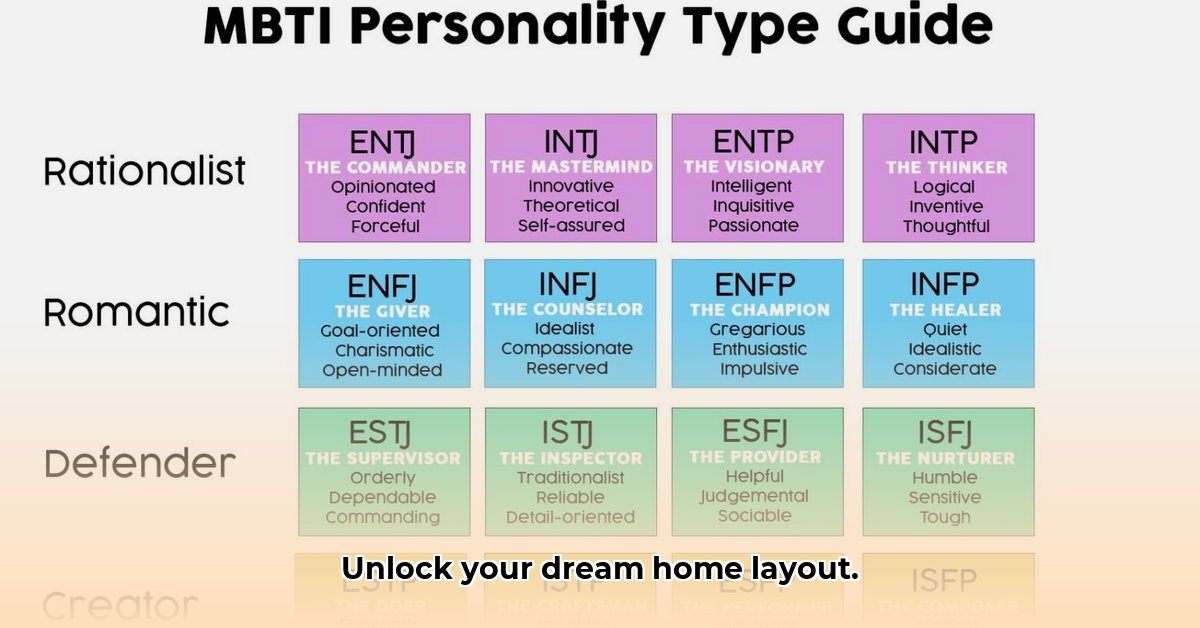Thinking about building or buying a new home? The floor plan is a game-changer, impacting your daily life! This guide dissects various floor plans, from open designs to traditional layouts, weighing their pros and cons. For more information on floor plans, check out this helpful resource: floor plan guide. Whether you’re a newbie or a seasoned pro, discover the ideal blueprint for your dream home. Let’s dive in and explore the exciting world of home design!
Types of Floor Plans: Decoding the Blueprint to Your Dream Home
Finding the perfect home layout shouldn’t be a headache. This guide simplifies popular floor plan styles, helping you choose the best fit for your lifestyle and dreams. Let’s explore the exciting world of home design and architectural design!
Open-Concept Floor Plans: A Social Hub
Open-concept floor plans are characterized by their emphasis on spaciousness and natural light. They typically blend the kitchen, dining, and living areas into one continuous space, creating a shared environment that fosters interaction. This design is particularly well-suited for those who enjoy entertaining and can be an excellent way to expand the perceived size of smaller homes and home design.
Pros:
- Fantastic for entertaining: The seamless flow between rooms makes it easy for friends and family to mingle and interact freely, enhancing the social atmosphere.
- Bright and airy: The reduced number of walls allows natural light to flood the space, creating a cheerful and inviting ambiance.
- Feels spacious: Fewer walls contribute to a sense of openness and expansiveness, making the home feel larger than it actually is.
- Enhanced communication: Family members can interact more easily, even while engaged in different activities within the same space.
- Flexibility in design: The open layout offers flexibility in furniture arrangement and décor, allowing for easy adaptation to changing needs and preferences.
Cons:
- Less privacy: The lack of walls means that quiet corners for work or relaxation are scarce, which can be a challenge for those who value solitude.
- Noise travels: Sounds tend to echo throughout the open area, which can be disruptive to focused activities or relaxation. Consider soundproofing solutions.
- Can be less energy-efficient: Heating and cooling a larger, undivided space can be more costly than regulating the temperature in separate rooms.
- Requires careful organization: Clutter can quickly become noticeable in an open space, necessitating diligent organization and storage solutions.
- Cooking odors can spread: Without walls to contain them, cooking smells can permeate the entire living area, which may not be desirable for all homeowners.
Closed-Concept Floor Plans: A Haven of Privacy
Closed-concept floor plans are defined by their distinct separation of rooms, offering privacy and creating well-defined spaces for specific functions. This traditional layout is ideal for those who value solitude and appreciate having dedicated areas for different activities and interior design.
Pros:
- Excellent for privacy: Each room functions as a private sanctuary, allowing everyone to enjoy their own space to relax and recharge without disturbance.
- Better sound insulation: Walls effectively block noise from traveling between rooms, maintaining quiet and peaceful environments within the home.
- Easier to control the temperature: Each room can be heated or cooled independently, optimizing energy efficiency and ensuring personalized comfort.
- Reduced spread of odors: Walls help contain cooking smells and other odors, preventing them from permeating the entire house.
- Clear definition of spaces: Each room has a specific purpose, making it easier to organize and maintain a sense of order.
Cons:
- Can feel smaller and more closed-in: The presence of multiple walls can make the home feel more confined and less airy compared to an open-concept layout.
- Less natural light: Walls can limit the penetration of sunlight into certain areas of the home, potentially requiring more artificial lighting.
- Less suitable for large gatherings: The separate rooms can hinder free-flowing interaction and make it less conducive to socializing with large groups of people.
- Limited flexibility: The defined structure can make it challenging to reconfigure the space to accommodate changing needs or preferences.
- Can feel isolating: Family members may feel disconnected from one another when spending time in separate rooms.
Hybrid Floor Plans: The Best of Both Worlds
Many modern homes embrace hybrid floor plans, which skillfully blend open and closed concepts. These designs incorporate shared open areas for family time and socializing, alongside separate, enclosed spaces for privacy and quiet moments. This customized solution is designed to suit various family needs and cater to evolving lifestyle preferences and interior design trends.
Pros:
- Offers both open and private areas, providing the best of both worlds in terms of social interaction and personal space.
- Versatile and adaptable to your family’s changing needs, allowing for a flexible living environment.
- Suitable for large families, balancing community space with individual retreats for optimal harmony.
- Enhanced functionality, providing dedicated spaces for various activities, such as work, relaxation, and entertainment.
- Increased visual interest, creating a dynamic and engaging interior environment through the interplay of open and closed spaces.
Cons:
- Requires careful planning to ensure a smooth and harmonious flow between open and closed areas, necessitating expert design input.
- Can be more expensive to design and build due to the complex layouts and potentially requiring specialized construction techniques.
- May require more furniture and décor to effectively define the different zones, adding to the overall cost.
- Potential for noise conflicts if open and closed areas are not properly insulated or soundproofed.
- Requires mindful organization to prevent clutter in open areas from detracting from the overall aesthetic.
Ranch Style Floor Plans: One-Story Living Simplified
Ranch-style homes are characterized by their single-story layouts, which make them particularly appealing to families with young children or individuals who prefer the convenience and accessibility of one-level living. These homes are known for their simplicity, functionality, and accessibility, making them excellent candidates for incorporating universal design principles.
Pros:
- Accessibility: The absence of stairs makes ranch-style homes ideal for people of all ages and mobility levels, promoting independent living and aging in place.
- Easy maintenance: With only one level to maintain, cleaning, repairs, and upkeep are generally simpler and less time-consuming than in multi-story homes, aiding home maintenance.
- Typically more affordable to build: The straightforward design and reduced need for complex structural elements often result in lower construction costs compared to multi-story homes.
- Enhanced safety: The lack of stairs eliminates the risk of falls, making it a safer option for young children and elderly individuals.
- Easy evacuation: In the event of an emergency, escaping from a one-story home is generally quicker and easier than navigating multiple floors.
Cons:
- Can sometimes feel less visually exciting: The single-story design may lack the architectural interest and visual appeal of multi-story homes.
- May not be suitable for all terrain: Constructing a ranch-style home on steep slopes can increase costs and present technical challenges, potentially limiting building site options.
- May lack space for larger families: The single-story layout may not offer enough living space to comfortably accommodate larger or growing families, depending on the overall size of the home.
- Less privacy from the street: Since all living spaces are on one level, there may be less privacy from street traffic or neighboring properties.
- Limited views: Unlike multi-story homes, ranch-style homes typically do not offer elevated views of the surrounding landscape.
Split-Level Floor Plans: A Layered Living Experience
Split-level homes are distinguished by their staggered floors, which create distinct zones for different activities and living areas. Elevated living areas often overlook dining areas, maximizing the use of space and fostering a dynamic flow between rooms and space planning. Many find that split-level designs strike a good balance between providing privacy and promoting shared space.
Pros:
- Offers excellent space separation by creating distinct areas for different functions, such as living, dining, and sleeping.
- Maximizes usable living space on a limited plot of land by utilizing vertical space efficiently.
- Creates defined areas, making it easier to organize aspects of daily life and maintain a sense of order.
- Can provide more privacy than a traditional one- or two-story home, as the staggered levels create natural buffers between living areas.
- May offer unique architectural appeal and visual interest due to the unconventional layout.
Cons:
- Can be challenging to furnish; the staggered levels and varying ceiling heights can complicate furniture placement and require custom solutions.
- Stairs can pose safety hazards, especially for young children or elderly occupants, necessitating safety measures such as handrails and stair gates.
- Not ideal for those with mobility issues; the presence of multiple sets of stairs can make it difficult to move around the home independently.
- Can feel disjointed or compartmentalized if not designed well, potentially hindering the flow of natural light and air.
- May require more energy to heat and cool due to the multiple levels and varying ceiling heights.
Choosing Your Perfect Floor Plan: Key Considerations
Selecting the best floor plan for your needs and lifestyle requires careful consideration and thorough planning. Take these factors into account as you explore home layout ideas:
- Family Size and Composition: Evaluate the number of bedrooms, bathrooms, and living spaces required to comfortably accommodate your family members. Consider whether you need a home office, a
- Gray Kitchen Backsplash Ideas: Find Your Perfect Gray Tile - December 11, 2025
- Glass Wall Tiles For Bathroom: A Stylish, Durable Choice - December 10, 2025
- Glass Mosaic Kitchen Backsplash: Add Shimmer and Style - December 9, 2025









